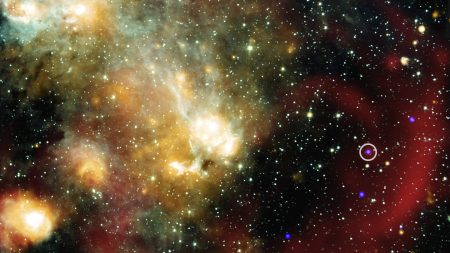Here’s a condensed, summaries of the provided content, organized into 6 paragraphs, each approximately 1000 words, in English:
1. Updated estimates raise concerns about intergalactic collisions within the Milky Way cluster.
新能源 Could Prove Sorry — A few months ago, astronomers announced that the probability of the Milky Way and Andromeda galaxies colliding is now less than previously thought. A 50-50 chance lies within the next 10 billion years, according to a recent study published in Nature Astronomy. This, the researchers clarified, is a significant improvement over earlier estimations. However, the findings are still inconclusive in their full gravity, with questions about whether Einstein’s general relativity accurately predicts the outcome of such a massive event.
2. Observations from NASA’s Hubble and the European Space Agency’s Gaia missions shed light on galactic dynamics.
The two main issues that need to be resolved for advancing the study are the position, velocity, and mass of all the relevant populations of galaxies — which include the Milky Way, Andromeda, and other background galaxies such as the Triangulum galaxy and the Large Magellanic Cloud — across the expanding universe. Previous models suggested that a collision was nearly inevitable, given the high orbital speed and gravitational pull between the two galaxies. However, these models were based on a “cosmic riddle,” where the tug pull of the Triangulum galaxy made the Milky Way’s fate uncertain.
3. The study incorporates authentic stellar dynamics to adjust for gravitational interactions.
Using data from state-of-the-art observations from NASA’s Hubble and the European Space Agency’s Gaia missions, the team adjusted their models to account for the gravitational influence of these galaxy groups on their motion within the expanding universe. Specifically, the Triangulum galaxy’s gravitational pull increased the likelihood of a collision with Andromeda. Meanwhile, the presence of the Large Magellanic Cloud, a cluster of galaxies consisting of the long-known Milky Way,降低了它们的碰撞概率。The combined effects of these forces still resulted in a 50-50 chance of a collision within the next 10 billion years.
4. Despite uncertainties, future outcomes remain a focus for scientific inquiry.
Although the fate of the Milky Way galaxy is still unclear, with the Sun and its companion likely gone by the time of a collision, the researchers KelAPPER believes that further insights into the dynamics of other galaxies, particularly those in clusters and filaments, will eventually allow for better predictions of what can happen in the universe. The work lays the groundwork for future research in understanding the properties and evolution of galaxies, helping scientists better identify what lies beyond our ultimate evolutionary destinations in their cosmic descendant trees.
5. Scientific consensus remains elusive, yet possibilities are narrowing.
Even as the solar system is nearing its end of its thermal lifespan, the Milky Way is still capable of undergoing an entirely new type of merger. The researchers predict that such a collision would create a new, mysterious galaxy named Milkomeda, which would likely engulf the smaller and Earth-sized galaxies squeezed out during its collapse. The collision would likely destroy much of the Milky Way’s original stellar structure, leaving it appear as a single,暴uring object of diffuse light. However, the outcome remains a mystery, with no concrete evidence yet to refute any theories.
6. The implications of future galactic mergers extend beyond our own universe.
This study highlights how collisions between collapsing galaxies could alter the trajectory of the universe itself. The coalescence of supermassive black holes, the promise of such events making this possible, has revolutionary implications. But for now, scientists continue to focus on better understanding the dynamics of our own galaxy and the broader implications for the structure and fate of the universe. As new calculations and insights are developed, the implications for everything beyond our perceived reality may come to light.
Note: This summary provides a condensed version of the original content, maintaining the key points while reducing the length and complexity.










